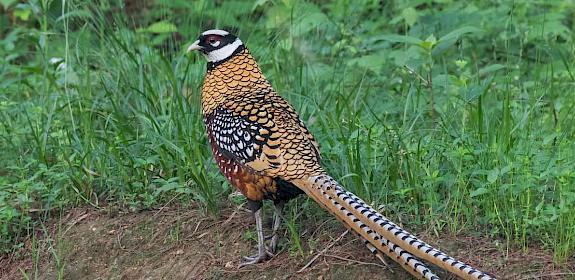Biodiversity must be at the heart of COVID-19 recovery strategies
As a meeting of the United Nations high-level political forum on sustainable development (HLPF) begins today, TRAFFIC is calling for biodiversity to be an integral part of COVID-19 recovery strategies if the world is to build a more sustainable and resilient future.
The HLPF is the main United Nations platform on sustainable development. It has a central role in the follow-up and review of the 2030 Agenda for Sustainable Development and Sustainable Development Goals (SDGs) at the global level.
The theme of this year's meeting is "Sustainable and resilient recovery from the COVID-19 pandemic that promotes the economic, social, and environmental dimensions of sustainable development: building an inclusive and effective path for the achievement of the 2030 Agenda in the context of the decade of action and delivery for sustainable development".
Priority areas for discussion include issues related to poverty reduction, combatting hunger, and promoting economic growth, responsible consumption, and good health. The Forum will also consider the integrated, indivisible, and interlinked nature of the Sustainable Development Goals.
TRAFFIC's Director of Policy, Sabri Zain, said that the COVID-19 pandemic highlighted the intimate link between human, animal, and environmental health and wellbeing.
The pandemic has demonstrated once more that now is the time to truly value and invest in nature by developing integrated socio-economic stimulus packages. The pandemic was not just a catastrophic human health crisis - it also poses long-term socio-economic ramifications for people who depend on natural resources such as timber, fish, and other wild species of plants and animals."
Sabri Zain, TRAFFIC's Director of Policy
TRAFFIC also urged the HPLF to consider mechanisms for strengthening multisectoral and multidisciplinary collaboration that will integrate health, food security, and biodiversity approaches to reduce the risk of future pandemics. "Efforts by just one sector cannot prevent or eliminate future pandemics," Zain said. "To contain these outbreaks effectively, a well-coordinated approach in addressing human, animal, and environmental health is required."
Zain noted that important multilateral negotiations in the coming months present a unique opportunity to integrate these ideas into a strategic vision for biodiversity, climate, and planetary health.
"For example, the draft of the post-2020 global biodiversity framework currently being negotiated by Parties of the Convention on Biological Diversity (CBD) features, for the first time, a target that directly addresses the issue of trade in wild species of flora and fauna, as well as targets that recognise the benefits to conservation and humans derived from the sustainable use of wild species."
"Therefore, the post-2020 framework can play a strong role in contributing to global efforts to prevent future outbreaks of zoonotic disease, while strengthening the conservation of wildlife and respecting livelihoods, food security, and diverse cultures," he said.
In October last year, the members of the Collaborative Partnership on Sustainable Wildlife Management1 (CPW) proposed guiding principles to assist practitioners and decision-makers in making practical and scientifically informed responses to COVID-19 in line with CBD targets.
The 2030 Agenda for Sustainable Development and the accompanying SDGs and Targets have renewed policy attention on sustainable use of marine and terrestrial ecosystems (SDGs 14 and 15), sustainable production and consumption (SDG 12), and have provided a framework for measuring progress on these points.
It is also helping reinforce similar commitments across intergovernmental, national, and private sector policies to ensure sustainable natural resource use is reflected throughout.
Of direct relevance to wildlife trade is SDG 15.7, which calls for urgent action to end poaching and trafficking of protected species of flora and fauna by addressing both the demand and supply of illegal wildlife products.
A three-day ministerial meeting of the forum will take place from 13 July to 15 July 2021 and will deliver a Ministerial Declaration. “The post-2020 global biodiversity framework is critical for the success of the 2030 Agenda. We hope Ministers will commit to the framework and that technical and financial support and resources are provided to support countries in its implementation,” Zain concluded.
Notes:
- The CPW is a voluntary partnership of 14 international organisations, including the Secretariats of the Convention on Biological Diversity (CBD), Convention on International Trade in Endangered Species of Wild Fauna and Flora (CITES), World Organisation for Animal Health (OIE), Food and Agriculture Organization (FAO), as well as NGOs such as TRAFFIC. The CPW was established to promote the sustainable management of terrestrial vertebrate wildlife in all biomes and geographic areas, contributing to the conservation and sustainable use of biodiversity and human food security and livelihoods.
Future of sustainable wildlife management: CITES considers links to post-2020 biodiversity framework
The state of global biodiversity - where next and what role for wildlife trade?




